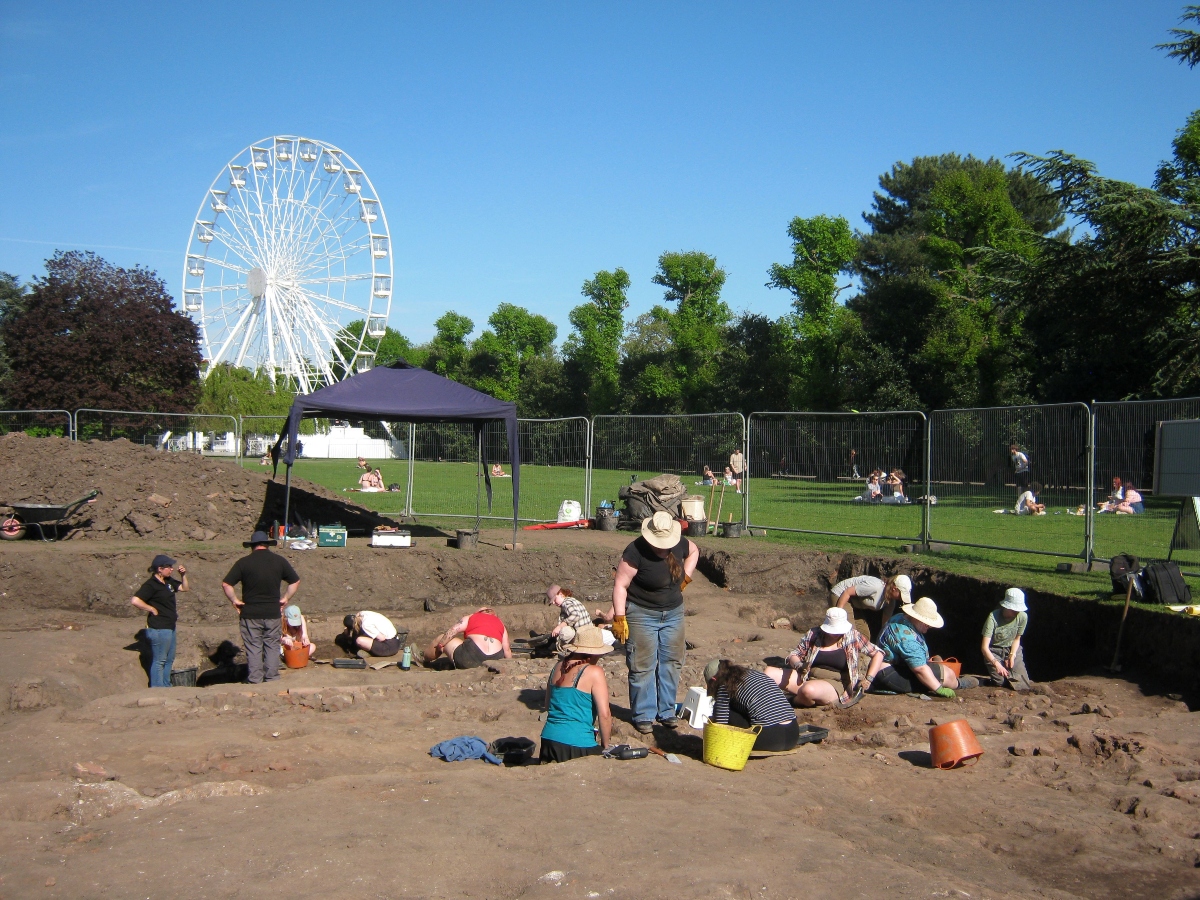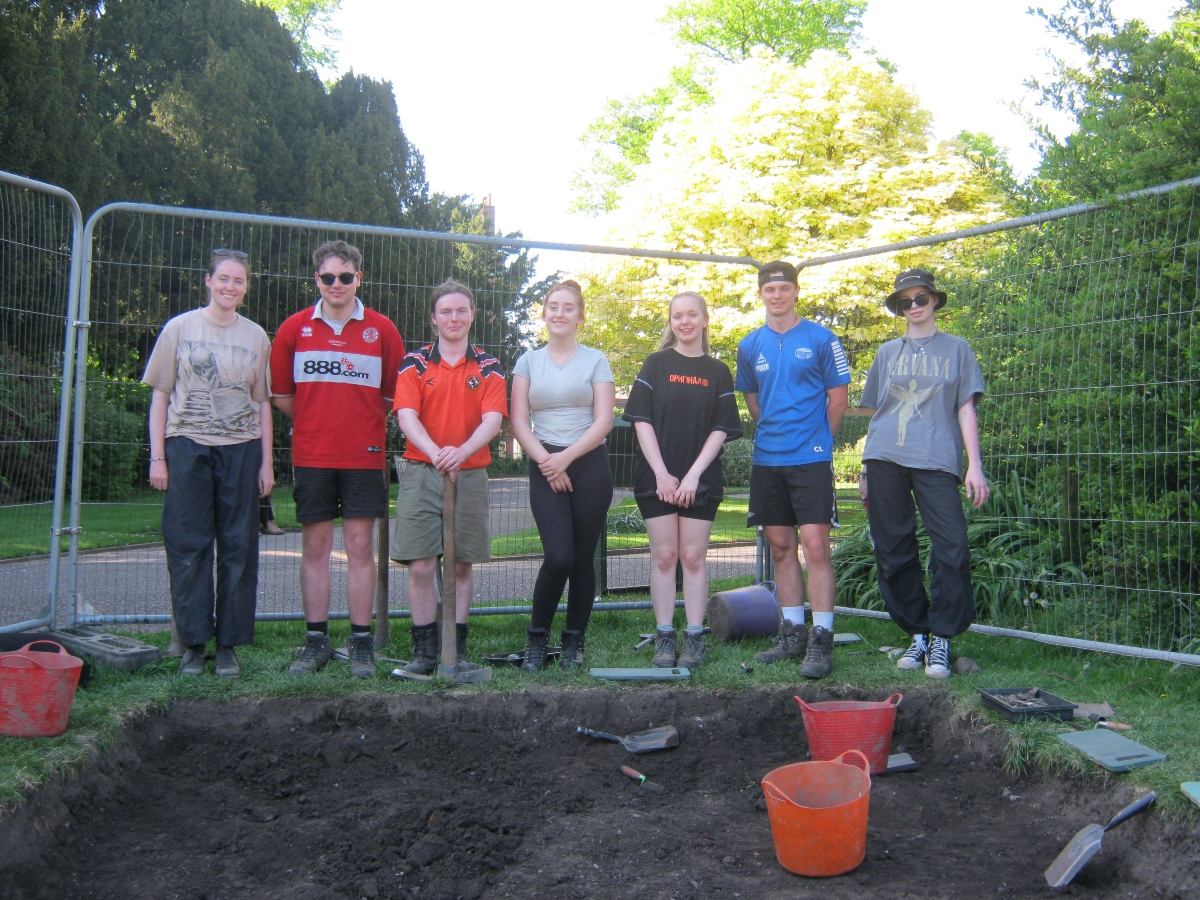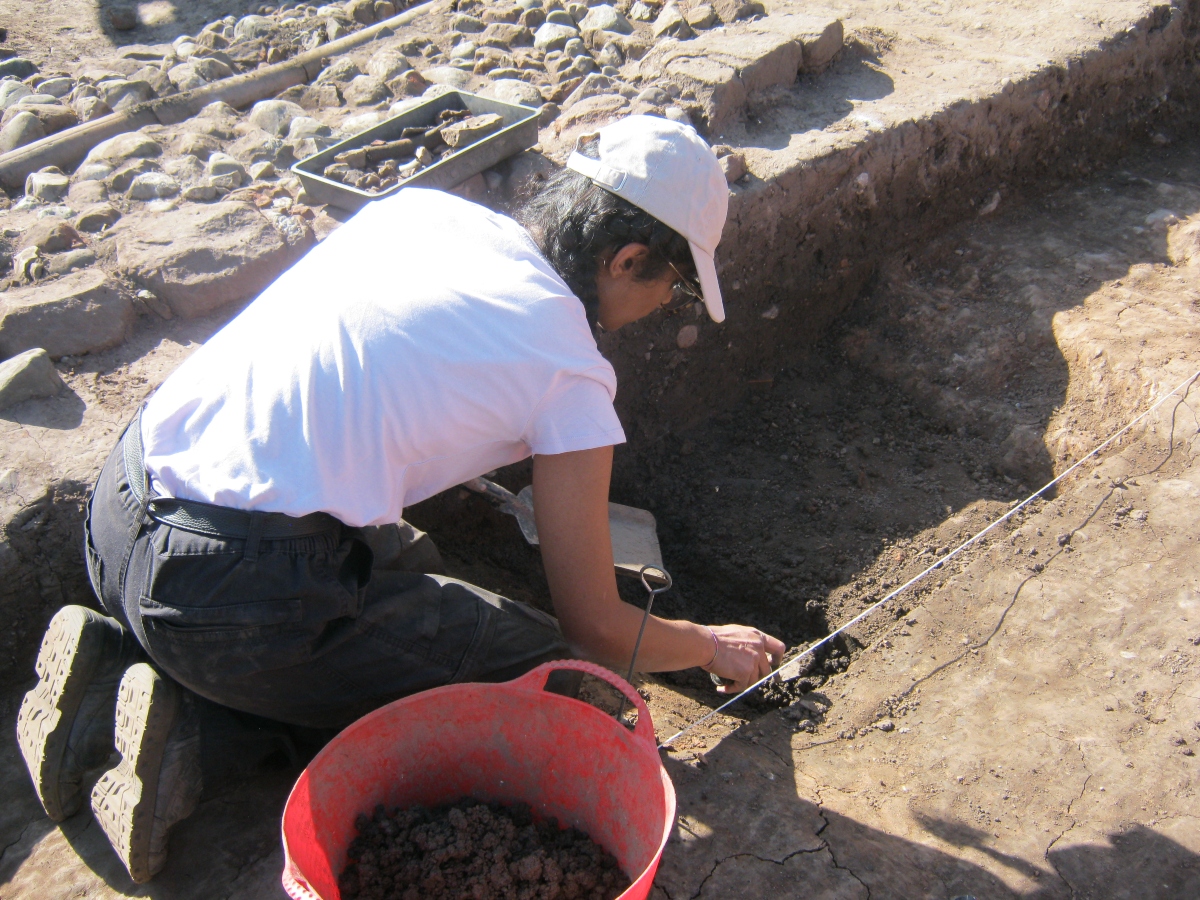It’s time again for new discoveries in Chester’s Grosvenor Park
Archaeology students from the University of Chester are uncovering the city’s past and developing their practical skills in Grosvenor Park with excavation training provided by local professional archaeologists.

Together they are hoping the dig at Grosvenor Park, that continues until Friday May 23, will this year reveal new information about the Roman history of the park and a medieval and 16th-century building destroyed in the English Civil War.
As well as gaining valuable work experience, the second-year Archaeology students will help to discover more about the past of this historic area of Chester. The annual excavation is run by West Cheshire Museums and is a partnership project between Cheshire West and Chester Council and archaeologists from the University of Chester’s School of Humanities and Social Sciences.
The excavation project began in 2007 with the aim of learning more about the area surrounding Chester’s Roman amphitheatre and the important Church of St John the Baptist, which was founded in the Saxon period, re-built as a Norman cathedral and converted to a parish church in the 16th century. Archaeologists want to discover how the position and ruins of the amphitheatre, as well as the influence of the church, impacted on the later use and development of the surrounding area.
Previous excavations discovered a Roman road running in an east/west direction through the park, and in the final two days of last year’s dig a large quantity of Roman pottery was found at the eastern end of the excavation trench. One of the students’ tasks this year is to investigate this part of the trench and find out whether there are any Roman remains that might indicate the purpose of the road and how this area of the park was used nearly 2,000 years ago.

Last year’s discoveries also included the remains of a medieval tiled floor, a wall, a collapsed slate roof and a complex system of drains made from slabs of stone at the western end of the trench. Another aim for this year is therefore to find out more about this building and how it relates to a medieval building found further to the north as well as a house documented to have been built in the late 1500s by Sir Hugh Cholmondeley which was later destroyed in the English Civil War.
Councillor Lisa Denson, Cabinet Member for A Fairer Future said: “Before this excavation project started little was known about the park’s archaeological past but the discoveries of the Roman road, part of a large Saxon defensive ditch, as well as the remains of the medieval building and its boundary ditch, plus the largest assemblage of English Civil War equipment to be found in Chester, have changed ideas about the archaeological importance of this beautiful area of Chester.
“The only period the team have not yet found evidence for is the prehistoric period but who knows what lies under the ground waiting to be discovered this year - come and visit the park to find out more.”
Dr Hannah Ewence, Head of Humanities, Cultures and Environment at the University of Chester added: “This partnership with West Cheshire Museums provides a really great opportunity for our students to apply their knowledge and skills in a real-life setting, gain professional experience and, most importantly, to make a tangible contribution to our collective understanding of Chester’s heritage.”

A free open afternoon will be held on Tuesday May 20, from 2pm to 4.30pm when site tours will take place and this year’s finds will be displayed; no booking is necessary. Visitors are also welcome to view the excavation in progress Monday to Friday from 9.30am to 12.30pm and 1.30pm to 4.30pm, when students will be pleased to answer questions about their work and discoveries.
The excavations have inspired more collaborative work between West Cheshire Museums and the Archaeology team at the University. Students have worked with museum staff to create exhibitions that include finds from the park. The current exhibition ‘Arty-ology' at the Grosvenor Museum, on display until June 29 aims to consider the way artistic reconstructions of Chester’s archaeological remains can offer alternative perspectives on the past.
Students and staff will post regular updates on social media channels; follow #DigChester to keep track of this year’s discoveries.
Anyone interested in an Archaeology degree can find out more at: Archaeology BA (Hons) (Single Honours) | University of Chester or visit the University at its next Open Day on Saturday June 21.